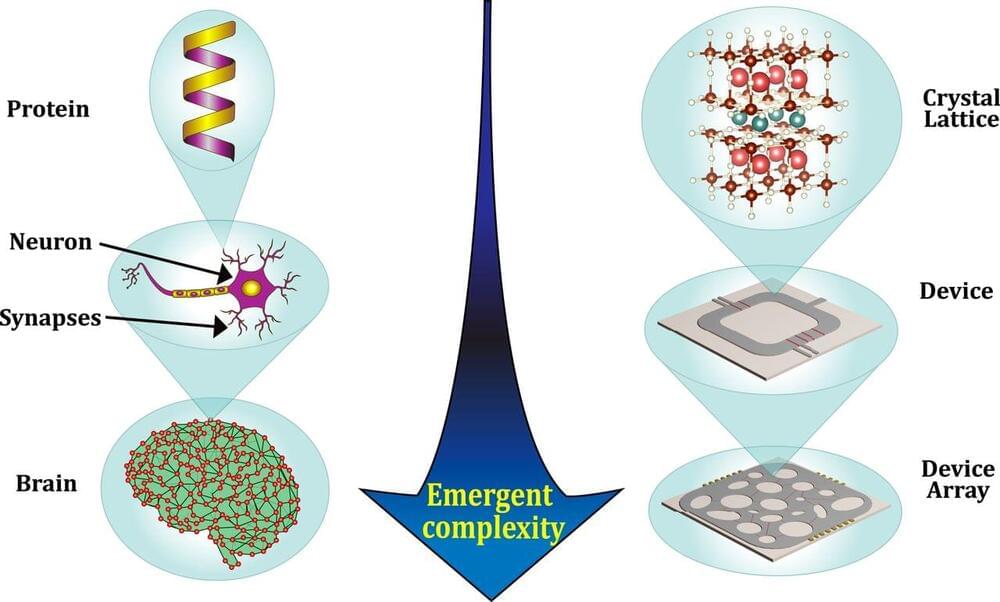Designing neuromorphic hardware for cryoelectronics is an important area of research as the field of computing paradigms beyond complementary metal-oxide-semiconductor (CMOS) progresses. Superconductivity and metal−insulator transitions are two of the most celebrated emergent, collective properties found in quantum materials such as strongly correlated oxides. Here, we present simulations of artificial neural networks that can be designed by combining superconducting devices (e.g. Josephson junctions) with Mott metal−insulator transition−based tunable resistor devices. Our simulations show that 1) neurons and synapses can be seamlessly created, 2) their functions can be tuned via learning, and 3) controlling disorder by incorporating light ions enables exponential multiplicity of states. The results open up directions for incorporating emergent behavior seen in condensed matter into hardware design for artificial intelligence.
Neuromorphic computing—which aims to mimic the collective and emergent behavior of the brain’s neurons, synapses, axons, and dendrites—offers an intriguing, potentially disruptive solution to society’s ever-growing computational needs. Although much progress has been made in designing circuit elements that mimic the behavior of neurons and synapses, challenges remain in designing networks of elements that feature a collective response behavior. We present simulations of networks of circuits and devices based on superconducting and Mott-insulating oxides that display a multiplicity of emergent states that depend on the spatial configuration of the network. Our proposed network designs are based on experimentally known ways of tuning the properties of these oxides using light ions. We show how neuronal and synaptic behavior can be achieved with arrays of superconducting Josephson junction loops, all within the same device.
